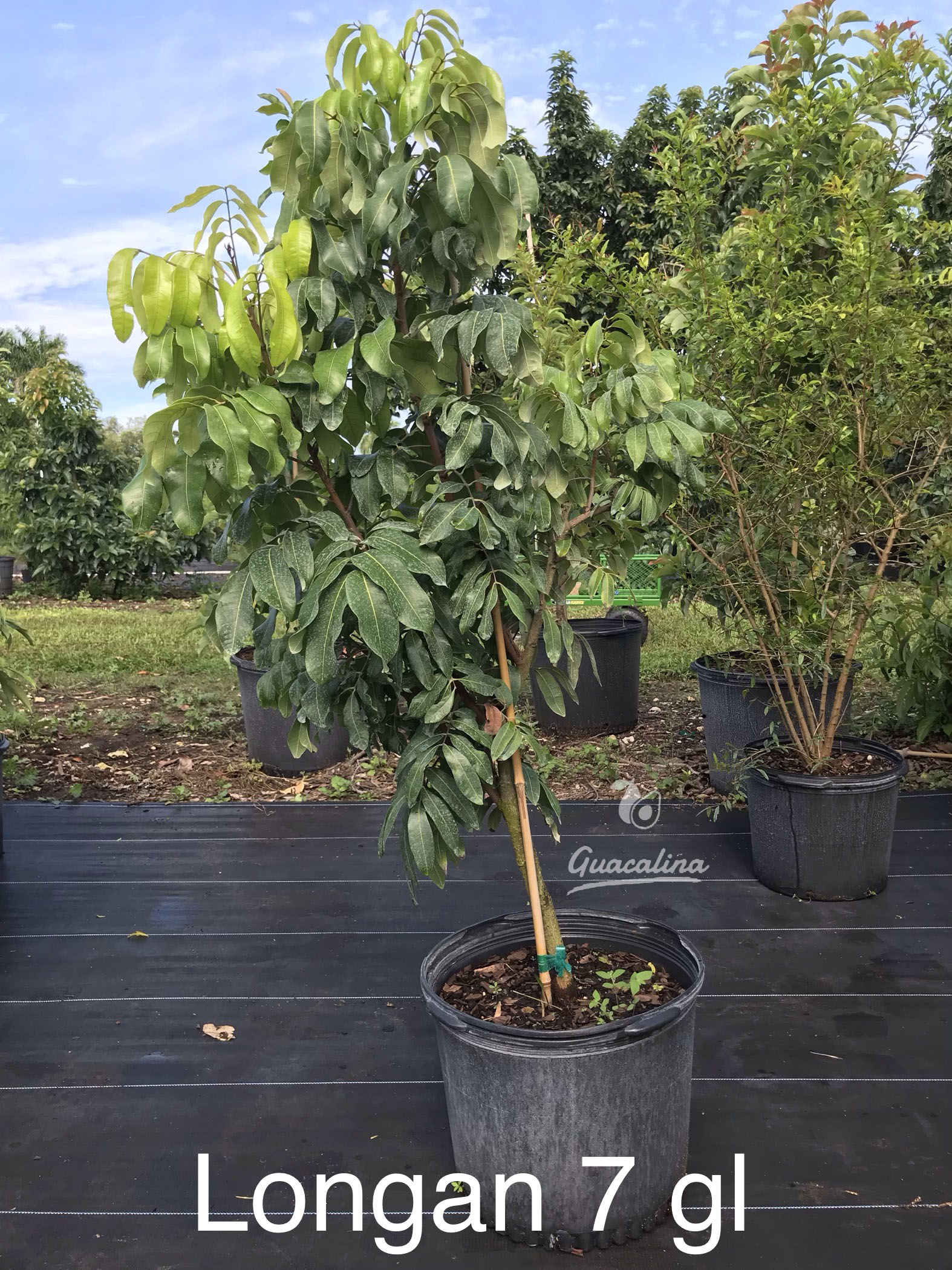Longan


Longan
Contact us to Confirm availability.
---------------------
Other names: Lungan, Lam-yai, Leng-keng
Origin: Southern China
Tree Height: 25 ft.
Cold Hardiness: 28° - 30°F
Season: July - September
Fruit Description: Fruit hangs in drooping clusters that are circular and about 1 in. wide. Peel is tan, thin, and leathery with tiny hairs. Flesh is translucent, the seed is large and black with a circular white spot at the base, giving the illusion of an eye.
More Info: Closely allied to the glamorous lychee, the longan, also known as dragon's eye or eyeball (from Cantonese lùhng-ngáahn, literally 'dragon eye'), has been referred to as the "little brother of the lychee", or li-chihnu, "slave of the lychee". Apart from being eaten raw like other fruits, longan fruit is also often used in Asian soups, snacks, desserts, and sweet-and-sour foods, either fresh or dried, and sometimes preserved and canned in syrup. The taste is different from lychees; while longan have a drier sweetness similar to dates, lychees are often messily juicy with a more tropical, grape-like sour sweetness.
Dimocarpus longan, commonly known as the longan (/ˈlɒŋɡən/), is a tropical tree species that produces edible fruit. It is one of the better-known tropical members of the soapberry family (Sapindaceae), to which the lychee, rambutan, guarana, korlan, pitomba, genip and ackee also belong. The fruit of the longan are similar to that of the lychee, but less aromatic in taste.[3] It is native to Southern Asia.[4]
The longan (from Cantonese lùhng-ngáahn 龍眼, literally "dragon eye"), is so named because it resembles an eyeball when its fruit is shelled (the black seed shows through the translucent flesh like a pupil/iris). The seed is small, round and hard, and of an enamel-like, lacquered black. The fully ripened, freshly harvested fruit has a bark-like shell, thin, and firm, making the fruit easy to peel by squeezing the pulp out as if one were "cracking" a sunflower seed. When the shell has more moisture content and is more tender, the fruit becomes less convenient to shell. The tenderness of the shell varies due to either premature harvest, variety, weather conditions, or transport/storage conditions.
